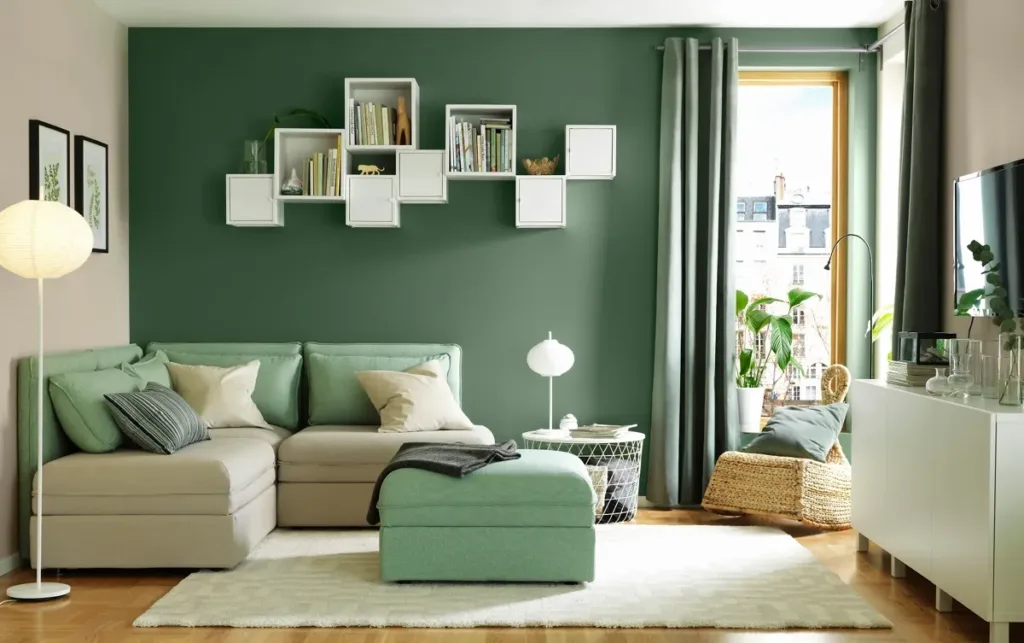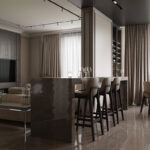The Role of Color Psychology in Interior Design
Color has a profound impact on human emotions and behavior, making it one of the most powerful tools in interior design. The right color choices can transform a space, evoke specific feelings, and even influence the activities that take place within it. Understanding the principles of color psychology allows interior designers to create environments that not only look aesthetically pleasing but also support the well-being and productivity of the inhabitants. This blog explores the role of color psychology in interior design, highlighting how different hues can shape the atmosphere and functionality of a space.
The Basics of Color Psychology
Color psychology is the study of how colors affect human emotions and behaviors. It is based on the idea that colors can evoke certain feelings and responses, whether consciously or subconsciously. For example, the color red is often associated with energy, passion, and excitement, while blue is known for its calming and soothing effects. These associations are not just cultural; they are also rooted in biological responses. For instance, red can increase heart rate and blood flow, which is why it is often used in environments where stimulation is desired.
In interior design, understanding color psychology helps designers make informed decisions about which colors to use in different spaces. By aligning the color palette with the intended mood and function of a room, designers can enhance the overall experience of the space.
The Impact of Different Colors in Interior Design
Each color in the spectrum has unique psychological effects, making it crucial to choose the right hues for each room. Here’s a closer look at how some popular colors influence interior spaces:
Red

Image Source: cityfurnish
Red is a powerful and energetic color that can evoke strong emotions. It is often used in dining rooms to stimulate appetite and conversation or in living rooms to create a lively and inviting atmosphere. However, too much red can be overwhelming, so it is often used as an accent color rather than a dominant hue.
Blue

Image Source: designcafe
Blue is known for its calming and serene qualities, making it an ideal choice for bedrooms and bathrooms. It is also associated with trust and reliability, which is why it is often used in offices and professional settings. Light blue can make a room feel more spacious, while darker shades add depth and sophistication.
Yellow
Image Source: housing
Yellow is a cheerful and uplifting color that brings warmth and positivity to a space. It is commonly used in kitchens and dining areas to create a bright and welcoming environment. However, too much yellow can be overstimulating, so it’s important to balance it with neutral tones.
Green

Image Source: home-designing
Green represents nature, growth, and balance, making it a versatile color for interior design. It is particularly effective in living rooms and bedrooms, where it can create a sense of relaxation and rejuvenation. Green is also associated with creativity, making it a good choice for home offices and studios.
Purple
Image Source: designcafe
Purple is often associated with luxury, creativity, and spirituality. It can add a sense of elegance and drama to a space, making it a popular choice for bedrooms and living rooms. Lighter shades of purple, such as lavender, have a calming effect, while deeper tones like plum can add richness and depth.
Neutral Colors
Image Source: tricopainting
Neutral colors like white, gray, beige, and brown serve as a versatile backdrop in interior design. They create a sense of balance and can make a space feel more open and airy. Neutrals are often used to highlight other colors or to create a sophisticated and timeless look. They also work well in minimalist designs, where simplicity and functionality are key.
The Role of Color in Different Rooms
Different rooms in a home serve different purposes, and the choice of color should reflect the specific function of each space. Here’s how color psychology can be applied to various rooms:
- Living Room: The living room is often the social hub of the home, so it’s important to choose colors that promote comfort and conversation. Warm colors like red, orange, and yellow can create an inviting and lively atmosphere, while cooler tones like blue and green can make the space feel more relaxed and serene.
- Bedroom: The bedroom is a place of rest and relaxation, so it’s best to choose colors that promote calmness and tranquility. Soft blues, greens, and purples are ideal for creating a peaceful environment, while neutral tones like beige and gray can add a sense of warmth and coziness.
- Kitchen: The kitchen is often considered the heart of the home, and the color choices here should reflect its central role. Bright, cheerful colors like yellow and orange can stimulate appetite and conversation, making the space feel more welcoming. White is also a popular choice for kitchens, as it creates a clean and fresh look.
- Bathroom: The bathroom is a space for self-care and relaxation, so colors that evoke a sense of cleanliness and serenity are ideal. Light blues, greens, and neutrals are popular choices for creating a spa-like atmosphere.
- Home Office: In a home office, the goal is to create a productive and focused environment. Colors like blue and green can enhance concentration and creativity, while neutral tones provide a calm and clutter-free backdrop.
Conclusion
Color psychology plays a crucial role in interior design services, influencing the mood, functionality, and overall experience of a space. By understanding the psychological effects of different colors, designers can create environments that not only look beautiful but also support the emotional and psychological well-being of the inhabitants. Whether it’s choosing calming blues for a bedroom, energizing reds for a living room, or cheerful yellows for a kitchen, the right color choices can transform a space into a true reflection of its purpose and the people who use it.
At Purn Interiors, we believe that the right use of color can transform any space into a sanctuary that reflects your personality, supports your lifestyle, and enhances your well-being. Our interior design solutions are rooted in the principles of color psychology, ensuring that every hue we choose for your space contributes to creating an environment that feels both aesthetically pleasing and emotionally harmonious.
Ready to elevate your home with the power of color? Contact Purn Interiors today to schedule a consultation in Ahmedabad.












